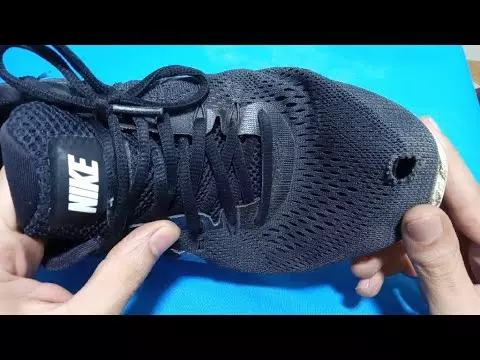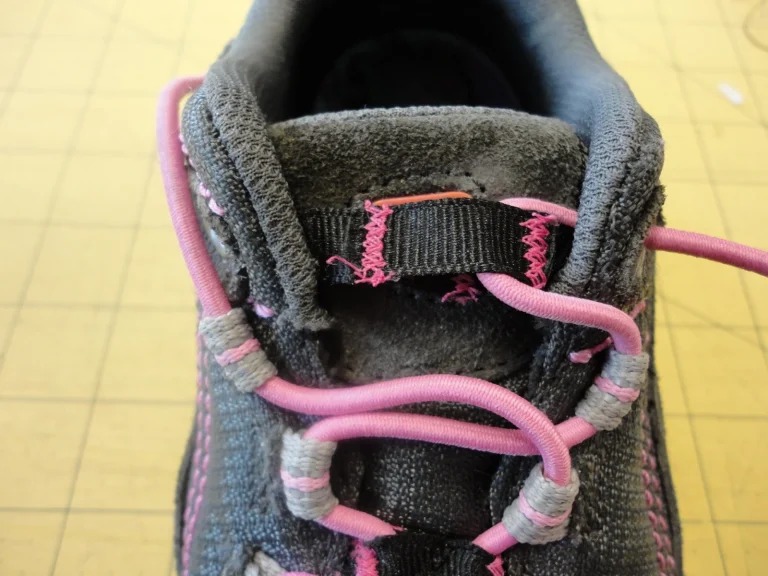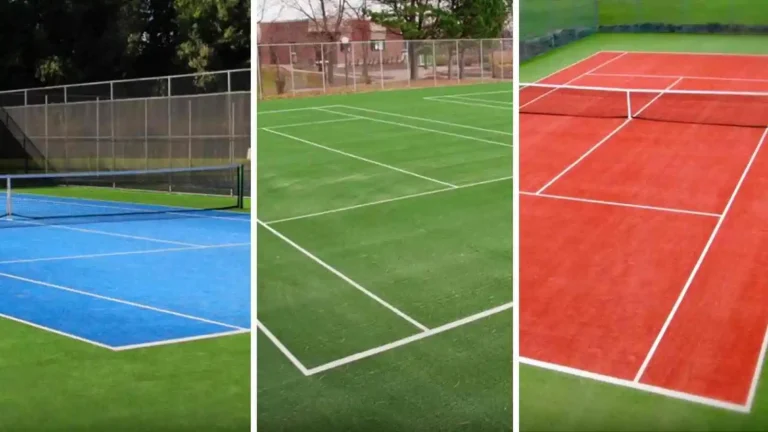How To Fix A Hole In A Shoe? Explore All Method In Detail
Introduction of this article:
Fixing a hole in a shoe is an essential skill that can save you money and extend the life of your favorite footwear. Whether it’s a small tear or a larger hole, repairing your shoes is a practical and sustainable solution. This article will guide you through the process of fixing a hole in your shoe, providing easy-to-follow instructions and tips. Here’s an easy guide to help you fix a hole in your shoe.
By assessing the damage and gathering the necessary materials, you’ll be well-prepared to tackle the repair. We’ll cover different patching methods based on the shoe’s material, ensuring a suitable fix. Reinforcing the repair and adding finishing touches will help make it durable and aesthetically pleasing.
Caring for the repaired shoe is equally important, and we’ll provide you with valuable tips to maintain its integrity and prolong its lifespan. So, let’s get started on this journey of repairing your shoes and embracing the satisfaction of a job well done!
How do you fix a hole in your shoe?
Fixing a hole in your shoe is a simple process that can save you money and extend the life of your footwear. Here’s an easy guide to help you fix a hole in your shoe:
Assessing the Damage
Before you begin fixing a hole in your shoe, it’s important to assess the damage. This step will help you understand the size and location of the hole, as well as the shoe’s material and construction. Here’s how to do it:
Identify the size and location of the hole
Take a close look at the hole and determine its size. Is it a small tear or a larger hole? Also, note where the hole is located on the shoe – is it on the sole, upper, or another part?
Evaluate the shoe’s material and construction
Different shoes are made of different materials, such as leather, fabric, or synthetic materials. Understanding the shoe’s material will help you choose the appropriate repair method. Additionally, consider the shoe’s construction – is it stitched, glued, or a combination of both?
By assessing the damage, you’ll have a better understanding of what needs to be done to fix the hole in your shoe. This will guide you in selecting the right materials and repair techniques for a successful outcome.
Read More: How To Stop Shoes Rubbing Top Of Toes?
Read More: How To Extend Ankle Straps On Shoes?
Gathering Materials To Fix A Hole In A Shoe
Before you can fix a hole in your shoe, it’s important to gather the necessary materials. Here’s a simple guide to help you collect everything you’ll need:
Patching material
Depending on the shoe’s material, you may need different types of patching material. For example, leather shoes may require a leather patch, while fabric shoes may need a fabric patch. Check with your local shoe repair shop or craft store for suitable patching materials.
Adhesive or glue
You’ll need a strong adhesive or glue to attach the patch to the shoe. Look for a glue that is specifically designed for shoe repairs. It should be flexible, durable, and suitable for the shoe’s material.
Scissors
A pair of sharp scissors will come in handy for cutting the patching material to the right size and shape.
Cleaning supplies
Before applying the patch, it’s important to clean the area around the hole. Gather some mild soap, water, and a clean cloth or sponge for this purpose.
Optional
Depending on the shoe’s construction and the size of the hole, you may need additional materials such as thread, a needle, or a shoe repair kit. Assess the damage to determine if these items are necessary.
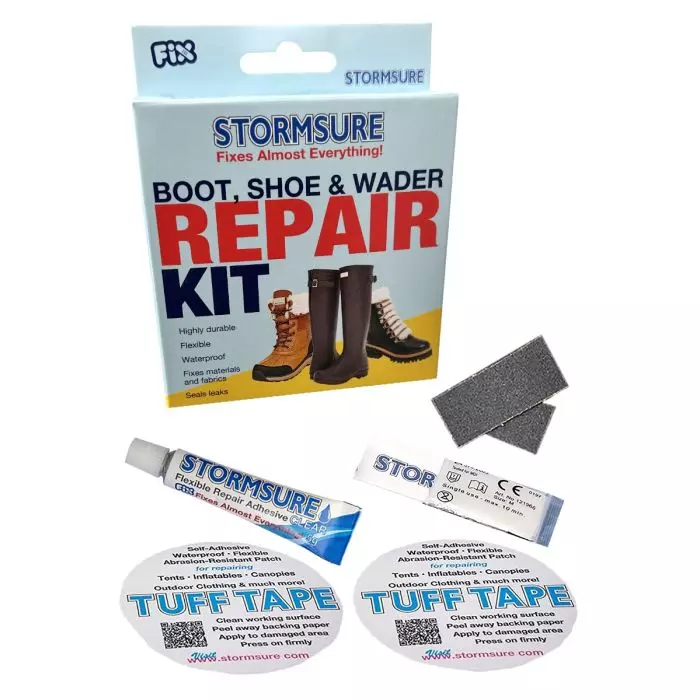
By gathering these materials in advance, you’ll be well-prepared to fix the hole in your shoe. Remember to choose materials that are suitable for the shoe’s material and construction to ensure a successful repair.
Preparing the Shoe
Before you start fixing the hole in your shoe, it’s important to prepare it properly. This step ensures that the repair will be effective and long-lasting. Here’s a simple guide to help you prepare the shoe:
Clean the shoe surface
Use a mild soap and water solution to clean the area around the hole. Gently scrub the surface with a clean cloth or sponge to remove any dirt, dust, or debris. Allow the shoe to dry completely before proceeding.
Remove loose threads or debris
Inspect the hole and its surrounding area for any loose threads or debris. Use a pair of scissors or tweezers to carefully remove them. This will create a clean and smooth surface for the patch to adhere to.
By cleaning the shoe surface and removing any loose threads or debris, you’ll ensure that the patch adheres properly and the repair is more effective. This step sets the foundation for a successful shoe repair.
Patching the Hole of shoe
Once you have assessed the damage and prepared your shoe, it’s time to patch the hole. Patching the hole will help restore the integrity of your shoe and prevent further damage. Here’s a step-by-step guide to patching the hole in your shoe:
Choose an appropriate patching method
Depending on the material of your shoe, there are different patching methods you can use. For fabric shoes, you can sew a patch using a needle and thread. For leather or synthetic shoes, you can use adhesive or glue to attach a patch.
Cut the patching material
Take your patching material, such as fabric or leather, and cut it into a shape slightly larger than the hole. This will ensure that the patch covers the entire damaged area.
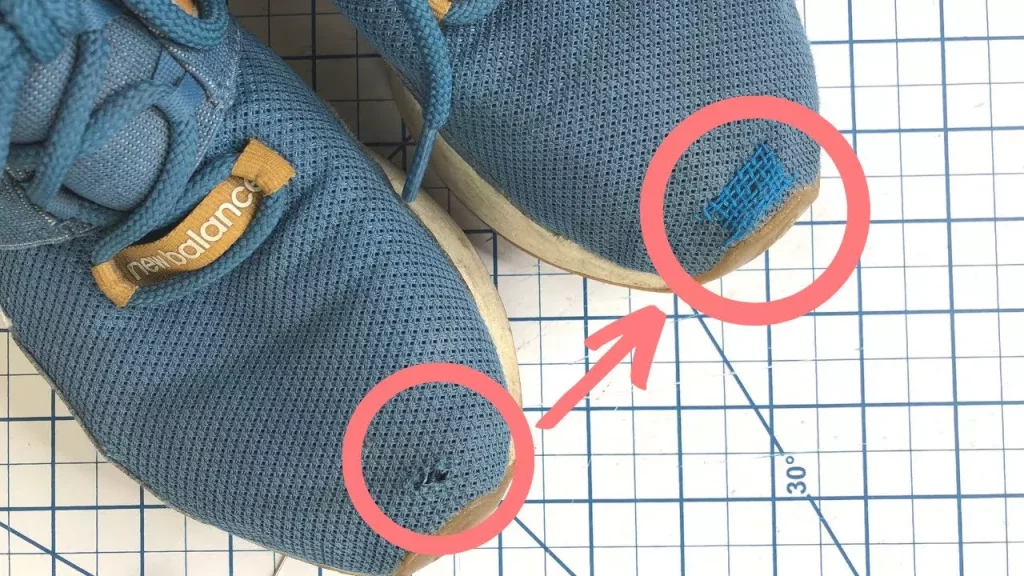
By following these steps, you can effectively patch the hole in your shoe. Remember to choose the appropriate patching method based on your shoe’s material and take your time to ensure a neat and secure repair.
Using Fabrics to Repair Holes of shoe
If you have a hole in your fabric shoe, using fabric to repair it is a great option. This method is simple and effective. Here’s a step-by-step guide to using fabrics to repair holes in your shoe:
Assess the hole
Examine the size and location of the hole. This will help you determine the amount of fabric you’ll need for the repair.
Gather materials
Collect a piece of fabric that matches your shoe’s color and texture. You’ll also need fabric glue or a needle and thread, scissors, and a clean cloth.
Clean the area
Use a clean cloth to gently clean the area around the hole. This will ensure a good bond between the fabric and the shoe.
Cut the fabric
Cut a piece of fabric slightly larger than the hole. Make sure the fabric matches the shape of the hole.
Apply fabric glue
If you’re using fabric glue, apply a thin layer around the edges of the hole. Press the fabric onto the glue, making sure it covers the entire hole. Smooth out any wrinkles or bubbles.
Allow the repair to dry
If you used fabric glue, follow the instructions on the product to allow it to dry completely. This will ensure a strong bond between the fabric and the shoe.
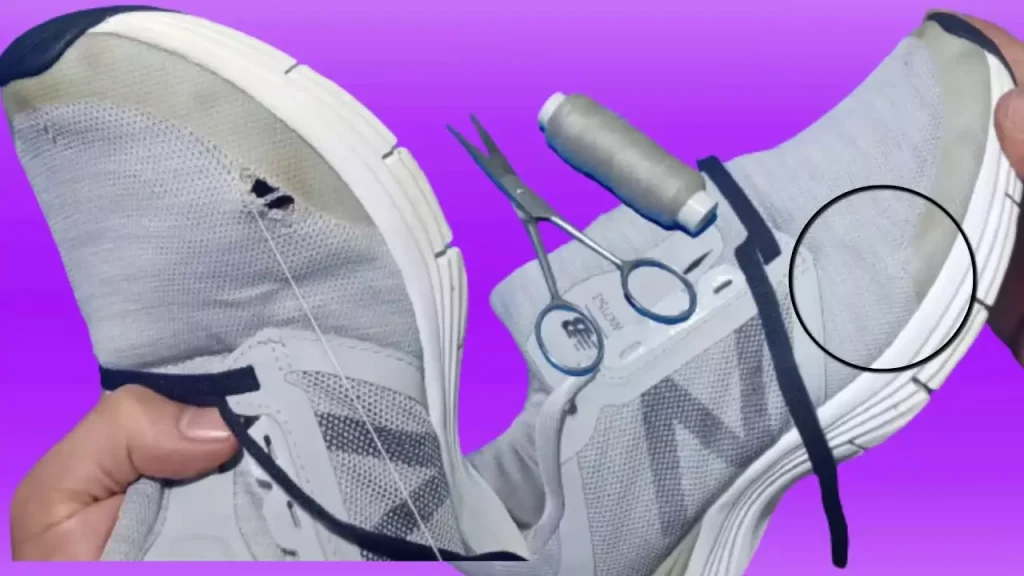
By following these steps, you can effectively repair a hole in your fabric shoe using fabric. This method is simple and can help extend the life of your favorite footwear.
Plugging Holes of shoe with Adhesive
If you have a hole in your shoe made of materials like leather or synthetic materials, using adhesive is a great option to plug the hole. This method is simple and effective. Here’s a step-by-step guide to plugging holes with adhesive:
Assess the hole
Examine the size and location of the hole. This will help you determine the amount of adhesive you’ll need for the repair.
Gather materials
Collect a strong adhesive suitable for your shoe’s material, scissors, and a clean cloth.
Clean the area
Use a clean cloth to gently clean the area around the hole. This will ensure a good bond between the adhesive and the shoe.
Apply adhesive
Apply a thin layer of adhesive to the back of a patch or directly onto the hole. Make sure to cover the entire hole with the adhesive.
Press and hold
Press the patch or the edges of the hole firmly together, ensuring a strong bond. Hold it in place for a few minutes to allow the adhesive to set.
Allow the repair to dry
Follow the instructions on the adhesive product to allow it to dry completely. This will ensure a secure and long-lasting repair.
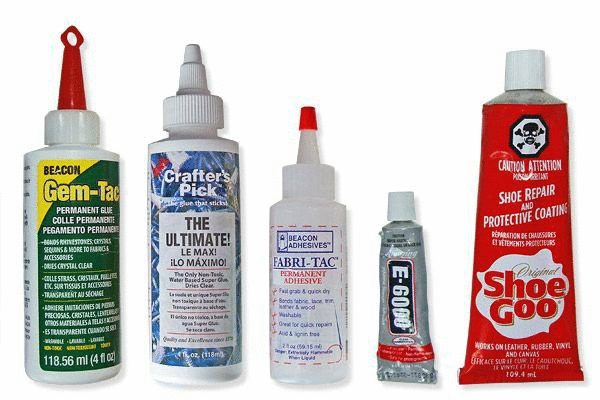
By following these steps, you can effectively plug a hole in your shoe using adhesive. This method is quick and reliable, helping you restore the functionality and appearance of your shoe.
Caring for the Repaired Shoe
After you have successfully repaired the hole in your shoe, it’s important to take proper care of it to ensure the longevity of the repair. Here are some tips to help you care for your repaired shoe:
Allow sufficient drying time
If you used adhesive or glue for the repair, make sure to allow the recommended drying time before wearing the shoe. This will ensure that the adhesive sets properly and the repair remains intact.
Avoid excessive strain
While the repair may be strong, it’s still important to avoid subjecting the repaired area to excessive strain or stress. Try to avoid activities that may put undue pressure on the repaired spot.
Clean with care
When cleaning your repaired shoe, be gentle around the repaired area. Use a soft cloth or brush to remove dirt or stains. Avoid using harsh chemicals or abrasive cleaners that could weaken the adhesive or damage the repaired spot.
Store properly
When not in use, store your repaired shoe in a cool, dry place. Avoid placing heavy objects on top of it, as this could cause unnecessary pressure on the repaired area.
Regular maintenance
Keep up with regular shoe maintenance practices, such as polishing, conditioning, or waterproofing, depending on the shoe’s material. This will help protect the repaired area and maintain the overall condition of the shoe.
By following these care tips, you can help ensure that your repaired shoe remains in good condition for an extended period. Taking proper care of your repaired shoe will help you enjoy its continued use and maximize the benefits of your repair efforts.
Related To: Can You Hike In Tennis Shoes?
Conclusion
Fixing a hole in your shoe is a practical and cost-effective way to extend its lifespan and save money. By assessing the damage, gathering the necessary materials, and following the appropriate repair method, you can successfully restore your shoe’s functionality and appearance. Whether you choose to use fabric, adhesive, or other patching methods, taking the time to properly prepare and care for the repaired shoe will ensure its longevity. Remember to follow proper cleaning and maintenance practices to protect the repaired area and maintain the overall condition of the shoe.

